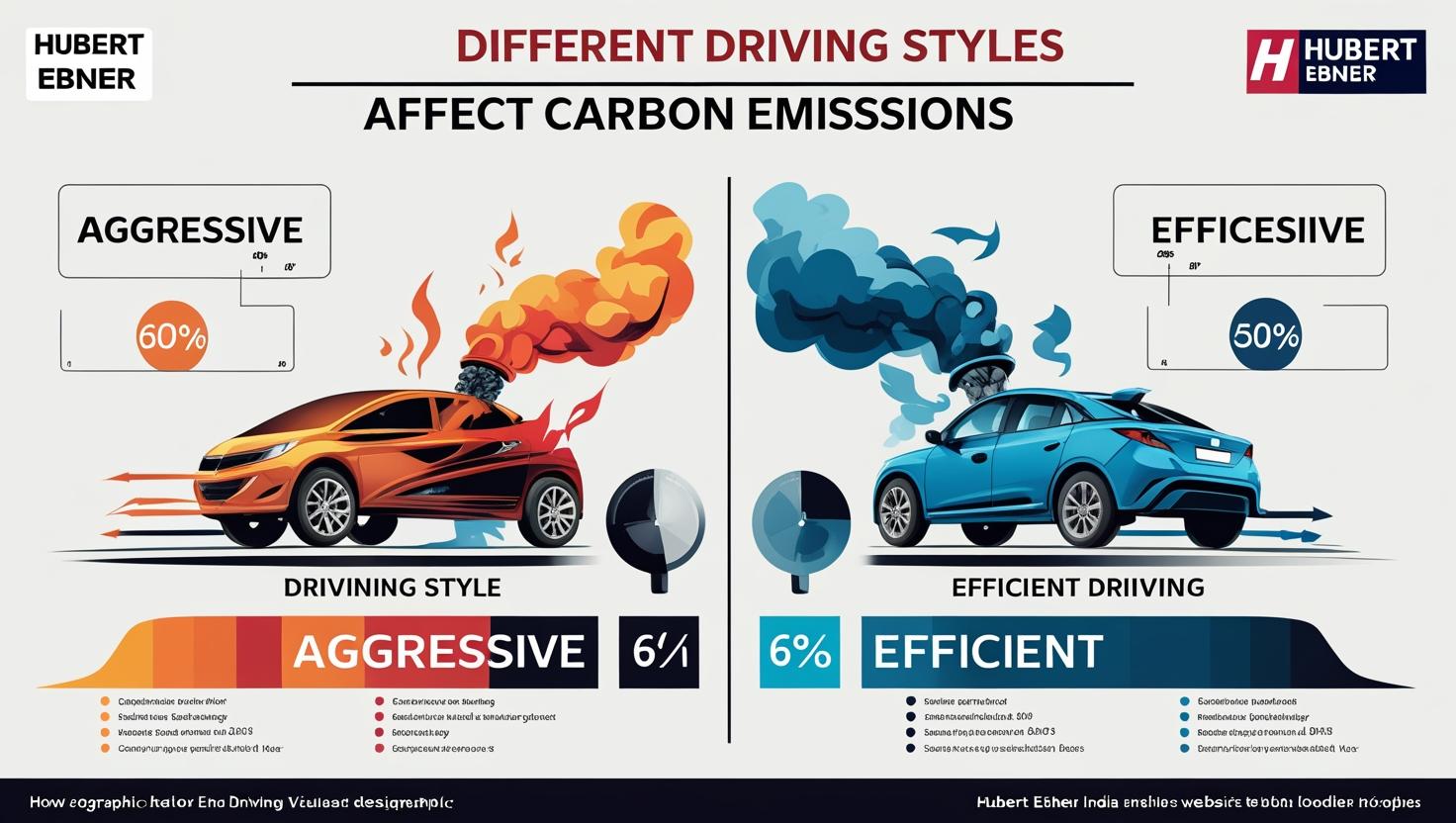How Driving Style Affects Carbon Emissions
Introduction
The way you drive has a direct impact on your vehicle’s carbon footprint. Every gear change, acceleration, and braking decision can either increase or reduce greenhouse gas & carbon emissions. In today’s world, where climate change and air pollution are pressing concerns, adopting an eco-friendly driving style is not only an environmental responsibility but also a financial advantage.
At Hubert Ebner India, we believe that safe driving and eco-driving go hand in hand, helping drivers lower emissions while improving road safety.
The Link Between Driving Habits and Emissions
Carbon emissions from vehicles primarily come from burning fossil fuels in internal combustion engines. The more fuel your vehicle consumes, the higher its CO₂ output. Aggressive driving, excessive idling, and poor vehicle maintenance all contribute to increased fuel use—and therefore, more emissions.
Driving Behaviors That Increase Carbon Emissions
1. Rapid Acceleration and Harsh Braking
- Impact: Quick bursts of speed and sudden stops burn more fuel and strain the engine.
- Emission Effect: Can increase CO₂ output by up to 40% compared to smooth driving.
2. Idling for Long Periods
- Impact: An idling engine consumes fuel without covering any distance.
- Emission Effect: Just 10 minutes of idling can release enough CO₂ to fill 150 balloons.
3. Over-Speeding
- Impact: Driving above optimal fuel efficiency speed (usually 50–80 km/h for most cars) increases drag and fuel usage.
- Emission Effect: For every 10 km/h over the speed limit, fuel consumption can rise by 10–15%.
4. Carrying Excess Weight
- Impact: Heavier loads require more engine power.
- Emission Effect: Every extra 50 kg increases fuel consumption by around 2%.
5. Poor Gear Management
- Impact: Driving in the wrong gear forces the engine to work harder.
- Emission Effect: Increases fuel use and CO₂ release unnecessarily.
Driving Habits That Reduce Carbon Emissions
1. Smooth Acceleration and Deceleration
Maintain steady speeds and anticipate traffic flow to avoid unnecessary stops.
2. Minimizing Idling
Turn off the engine if you’re waiting for more than 60 seconds.
3. Maintaining Optimal Speed
Stay within the most fuel-efficient speed range for your vehicle.
4. Lightening the Load
Remove roof racks, unused cargo, and unnecessary weight.
5. Regular Vehicle Maintenance
Well-maintained engines, proper tire pressure, and clean filters ensure maximum fuel efficiency.
The Bigger Picture: Environmental Impact
- Reduced Greenhouse Gases: Lower fuel use means less CO₂, helping fight climate change.
- Improved Air Quality: Less fuel burning reduces harmful pollutants like NOx and particulate matter.
- Long-Term Sustainability: Eco-driving reduces dependency on fossil fuels, supporting a cleaner energy future.
For Fleet Operators
For companies managing large vehicle fleets, driver behavior directly affects operational costs and sustainability goals. By training fleet drivers in eco-driving, businesses can:
- Cut fuel costs by up to 20%.
- Lower carbon footprint for CSR and ESG reporting.
- Reduce accident risks due to safer driving habits.
Hubert Ebner India offers specialized carbon-conscious driving programs that combine fuel-saving techniques with road safety best practices.
Technology to Support Low-Emission Driving
- Telematics: Track fuel usage and driver behavior for fleet optimization.
- Eco Mode: Automatically adjusts throttle and gear shifts for efficiency.
- Real-Time Feedback Systems: Alert drivers about over-speeding, harsh braking, and idling.
Conclusion
Your driving style plays a significant role in determining how much CO₂ your vehicle emits. By making small adjustments—such as smoother acceleration, maintaining optimal speeds, and reducing idling—you can help the environment, save fuel, and extend the life of your vehicle.
At Hubert Ebner India, we’re committed to empowering drivers with skills that create safer roads and a healthier planet. Remember: Drive smart, breathe clean.




